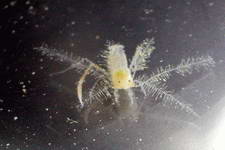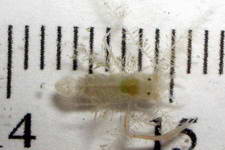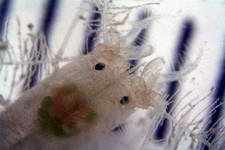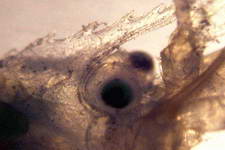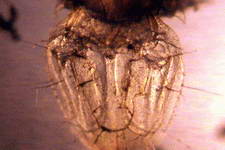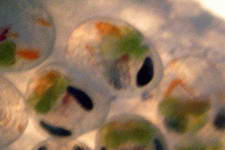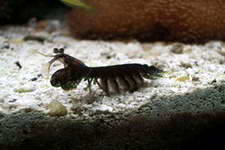
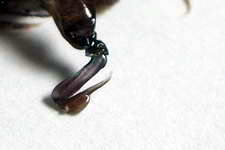

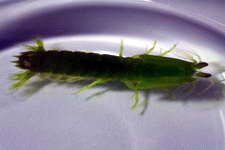

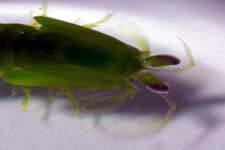
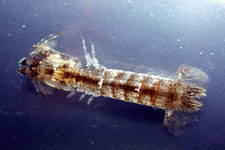
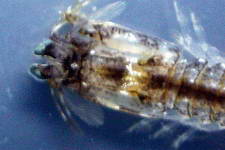
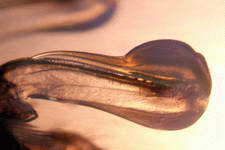
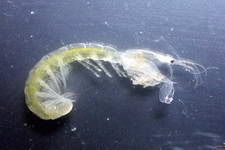
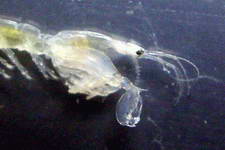
 Mantis Shrimp Movie
Mantis Shrimp Movie - A somewhat comical view of a mantis shrimp trying to catch a coral crab, which it fails to do.
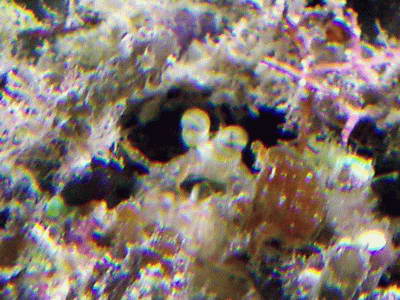
A Mantis Shrimp within its burrow
The Pistol Shrimp (
various species )
"Pistol" Claw Detail
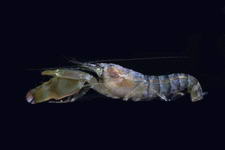
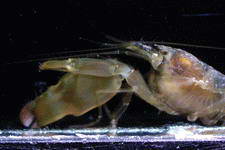

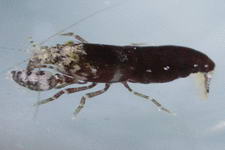
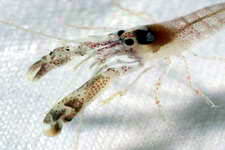
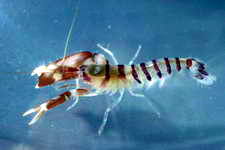
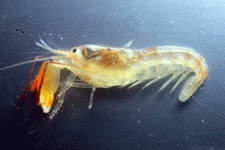
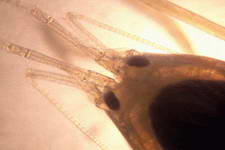
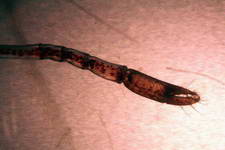
Below, an
Alpheus lottini
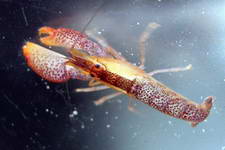
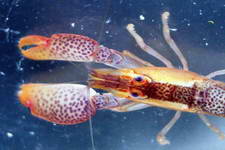
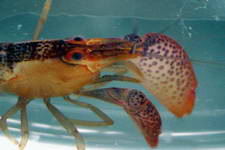
The below
Alpheus obesomanus and some of its relatives shown
above are responsible for the small, long skinny claws that we from
time to time see rapidly reaching out of small holes in live rock
grabbing at the surface of the rock. This particular specimen
was
also unfortunate enough to have been found by an Isopod parasite which
remains attached to the shrimp. The large Isopod shown is the female,
fully loaded with eggs and with this family of parasitic Isopods, the
male, being much smaller than the female remains on the female at all
times in order to serve his sole function in life, which is to
fertilize the female's eggs.
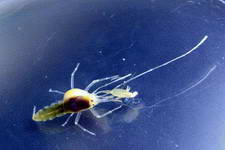

 The
Thalassinidean Shrimp -
The
Thalassinidean Shrimp - Found living within rock burrows,
rarely seen as they are very secretive.
Shown below is a
gravid female:
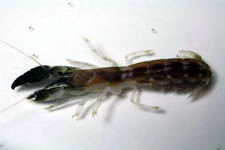
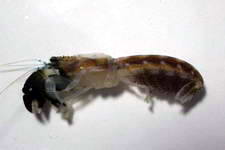
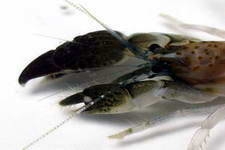
Shown below is one of the eggs along with a photo of it
hatching moments after the first photos were taken.


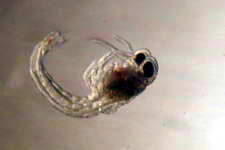
Another species of Thalassinidean
shrimp :
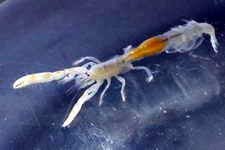
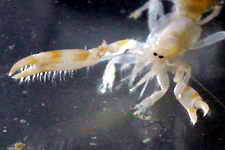
 The Mysidae
The Mysidae
- Order Mysidacea or more commonly known as the mysid shrimp or
fairy shrimps. The presence of a statocyst on the endopod of the
uropod is a characteristic feature of this group.


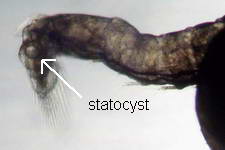 The Palaemonidae Family
The Palaemonidae Family - A species listing with photographic details. (below are a few examples)
A
Cuapetes tenuipes
Periclimenes holthuisi
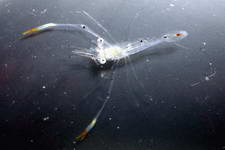
 Periclimenes
soror
Periclimenes
soror - A commensal on a variety of starfish,
shown below a 6mm long female.
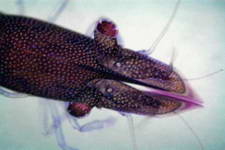
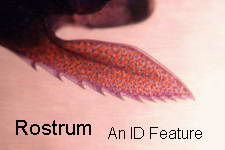
Another
P.
soror (color variant)

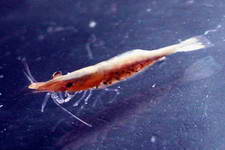
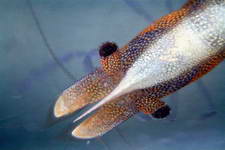 Corallicaris
superba
Corallicaris
superba - Branching corals
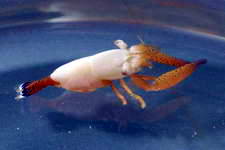
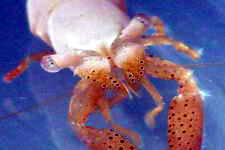
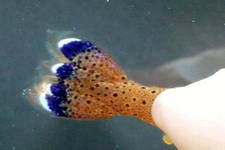 Harpiliopsis depressa
Harpiliopsis depressa
- Branching corals
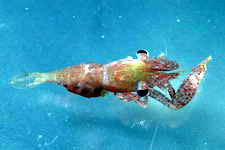

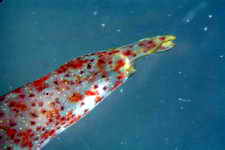 Harpiliopsis spiniger
Harpiliopsis spiniger - Pocillopora corals
(Female)
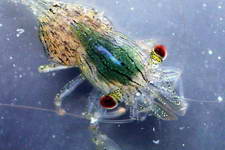
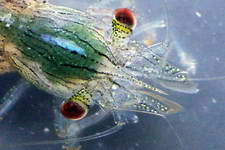
(Male)
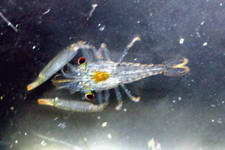

 Exoclimenella maldivensis
Exoclimenella maldivensis - click to view ID features.
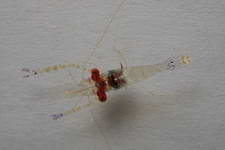
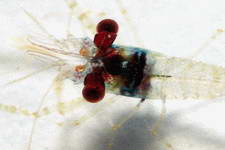
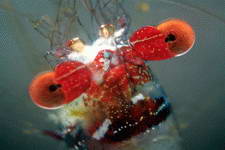
Anemone Shrimp
Sexy Shrimp
- anemones and corals
(
Periclimenes brevicarpalis)
(
Thor amboinensis)
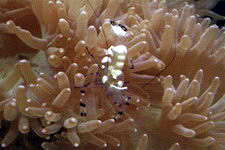
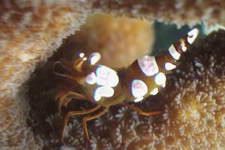 The Penaeid Shrimp
The Penaeid Shrimp
Metapenaeopsis lamellata - A common Penaeid species dredged from
the deep and used as both a food source and as bait for fishing here in
the Philippines. This shrimp is becoming more popular within the
aquarium hobby as a pet although I would caution against keeping them
in a reef aquarium as they can be quite destructive towards sessile
invertebrates, greatly reducing the diversity of life found on live
rocks.
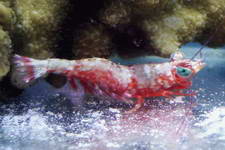
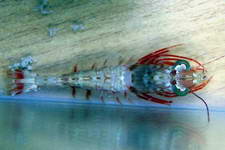
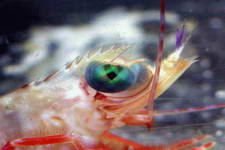
An Isopod Parasite of Shrimp (click link for photo details):
Shown
is a
female Bopyrid Isopod which will have a dwarf male attached to her.
While being a parasite, the Isopod does no real harm to the shrimp, any
attempts to remove the parasite will kill the shrimp.
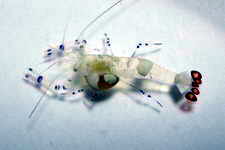
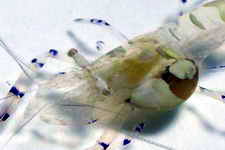

Another
Bopyrid species, parasite of shrimp.
Shown is the female and the empty chamber left behind when the parasite vacates.

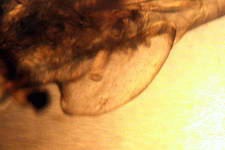
Below, an abdominal parasite in the genus
Hemiarthrus.
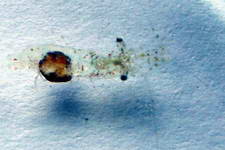
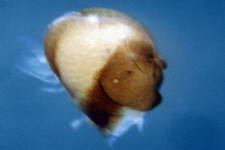
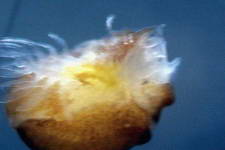
Microprosthema validum
Related to Coral Banded Shrimp
 Saron Shrimp
Saron Shrimp
- Found throughout the tropical Indo-Pacific.
Usually collected out of Hawai'i for the U.S., the Red Sea for European
markets. Usually found in pairs in the wild. Will fight to the death if
same sex individuals are placed together. Males with much longer first
pair of walking/fighting legs. Gets along fine with fishes,
other crustaceans. Female shown. Will eat all types of food, is very
reclusive and nocturnal.
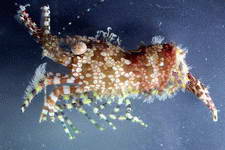
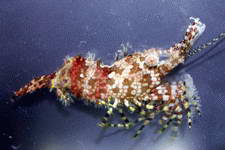

© 2016 ALL
RIGHTS RESERVED
All content and photographs are CopyRight
Protected
and may not be used,
copied or reproduced elsewhere
without permission of
the authors.
GO
BACK
Please take a
moment and consider supporting any one of the projects listed within.
Thank you.
Visitors to this
page since 24 Jan. 08
















































































